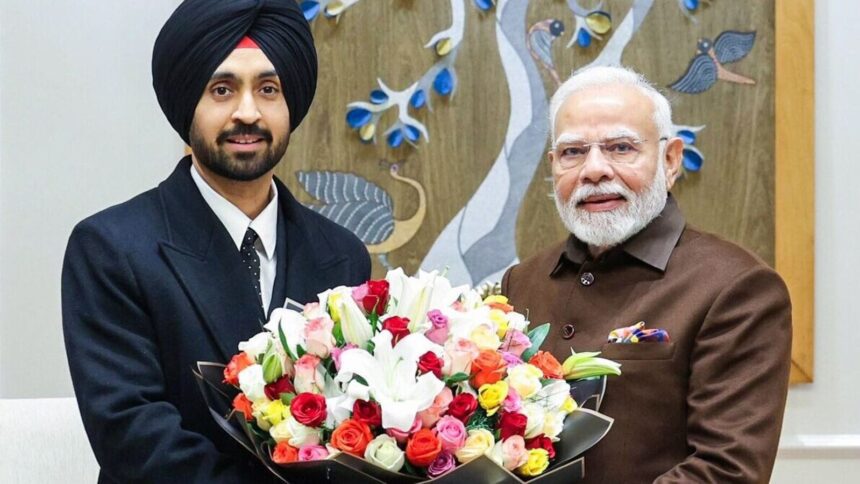The Backlash Against Diljit Dosanjh After Meeting PM Modi: A Complex Tapestry of Support and Dissent
On January 1, 2025, popular Punjabi artist and actor Diljit Dosanjh met with Prime Minister Narendra Modi, marking a controversial start to the new year. While the meeting was hailed by both figures as a “fantastic start” to 2025, it has triggered a wave of backlash from farmers who had previously garnered Dosanjh’s support during their protests against the controversial farm laws in 2020. This incident, woven with sentiments of disappointment and skepticism, illustrates a complex narrative of celebrity engagement in socio-political issues.
The Meeting: A Celebration or a Controversy?
During their meeting, which was posted on social media by Modi, discussions spanned music, culture, and India’s rich heritage. Modi praised Dosanjh for his multifaceted talent and ability to combine art with tradition. In response, Dosanjh acknowledged the Prime Minister’s sentiments, emphasizing the personal connections that underpin political leadership. He stated, “The position of Prime Minister is great, but behind it, there is a mother, a son, and a human being.” The seemingly cordial nature of their interaction appeared to offer a significant cultural handshake, yet this act has raised eyebrows among many.
Farmer Leaders Voice Their Concern
The farmers, who previously viewed Dosanjh as an ally during their fight against legislative changes pertaining to agricultural policies, are now questioning his loyalty. A farmer leader at the Shambu border articulated this discontent, highlighting that true solidarity would have meant joining the farmers’ protests rather than engaging with Modi. Statements like, “If Diljit truly cared about farmers, he would have come and joined us in solidarity,” reflect the growing frustration among these agricultural advocates. They feel betrayed, perceiving the meeting as a departure from his previous support for their cause.
The Context of the Protests
In late 2020, farmers across India initiated massive protests against three farm laws they believed would jeopardize their livelihoods. During this tumultuous period, celebrities like Diljit Dosanjh played a crucial role in bringing visibility to the movement, contributing to its wider resonance. His recent divergence from this stance by meeting the Prime Minister raises essential questions about the commitments of public figures when political landscapes shift.
A Celebration in Ludhiana
On the eve of his meeting with Modi, Dosanjh wrapped up his much-anticipated “Dil-Luminati India Tour” with a concert in Ludhiana, marking the end of a nationwide trek that celebrated his musical journey. The tour’s closing concert echoed the sentiments of joy and celebration, contrasting with the sober realities facing the farmers. Despite his achievements, the juxtaposition with the current agricultural unrest suggests that celebrity and socio-political advocacy often exist in tension, especially when actions diverge from previously held positions.
A Divided Reception
The reactions to Dosanjh’s meeting with PM Modi are not monolithic. While farmers express feelings of betrayal, others in the community may view the interaction as an opportunity for dialogue. Social media responses to the meeting have been mixed, with some supporters reinforcing the value of connection through culture, while critics firmly stand by their disappointment in Dosanjh’s perceived abandonment of the farmers’ plight.
Moving Forward
As society navigates the challenges of political climates, the role of popular figures like Diljit Dosanjh becomes increasingly significant. His actions and decisions will undoubtedly influence public opinion not only about him but also about the larger efforts surrounding farmers’ rights and issues. The responsibility resting on such celebrities to balance their art with advocacy is profound, encapsulating the ongoing struggle of intertwining entertainment with pressing social concerns.
Conclusion: An Ongoing Dialogue
The meeting between Diljit Dosanjh and PM Modi is a reminder of the complicated landscape that public figures navigate. As the narrative unfolds, it serves as a catalyst for discussions surrounding loyalty, influence, and the role of entertainment in socio-political discourse. For now, the world watches how both the artist and the farmer’s struggle will evolve in the wake of this controversial encounter.










